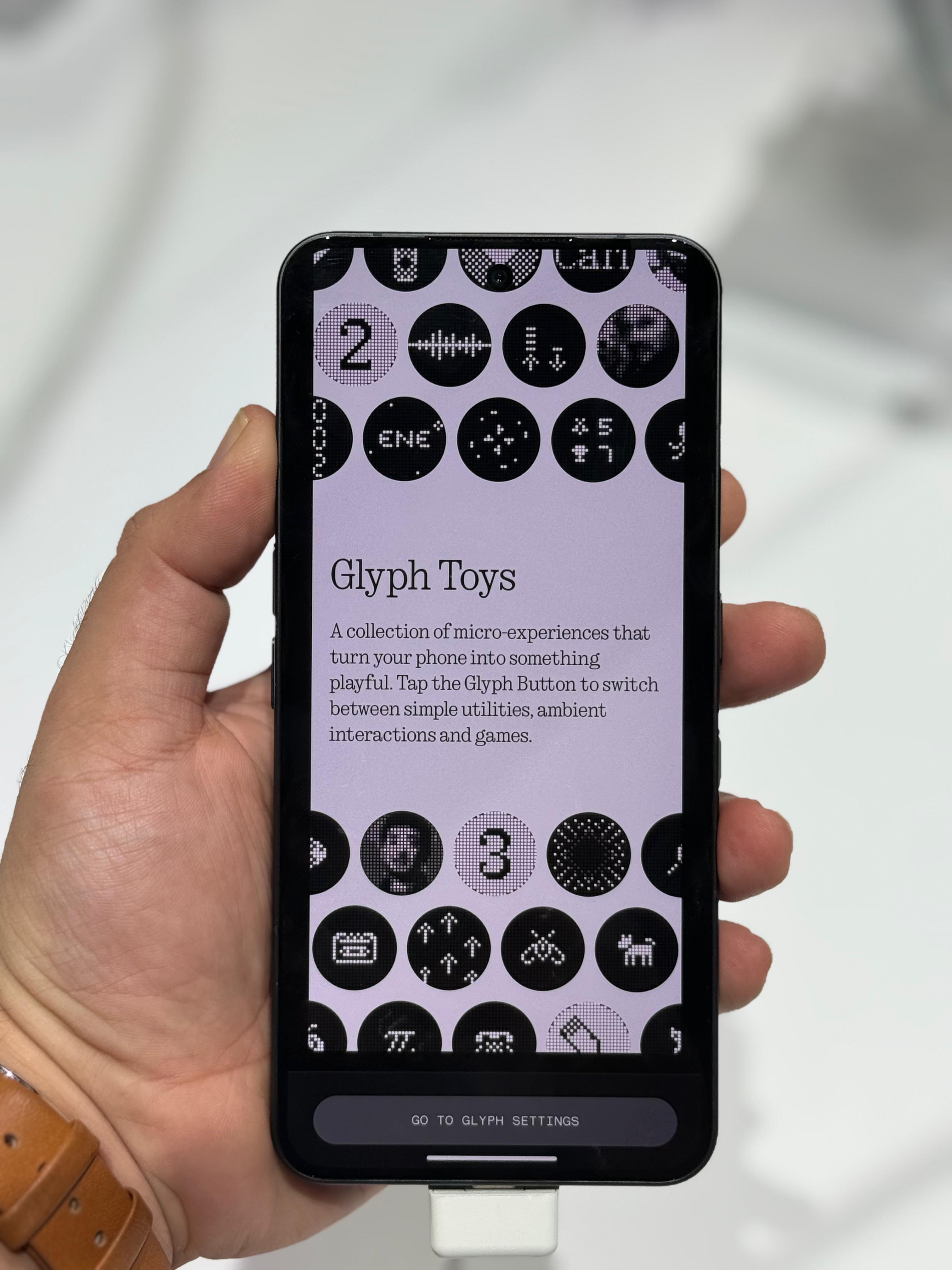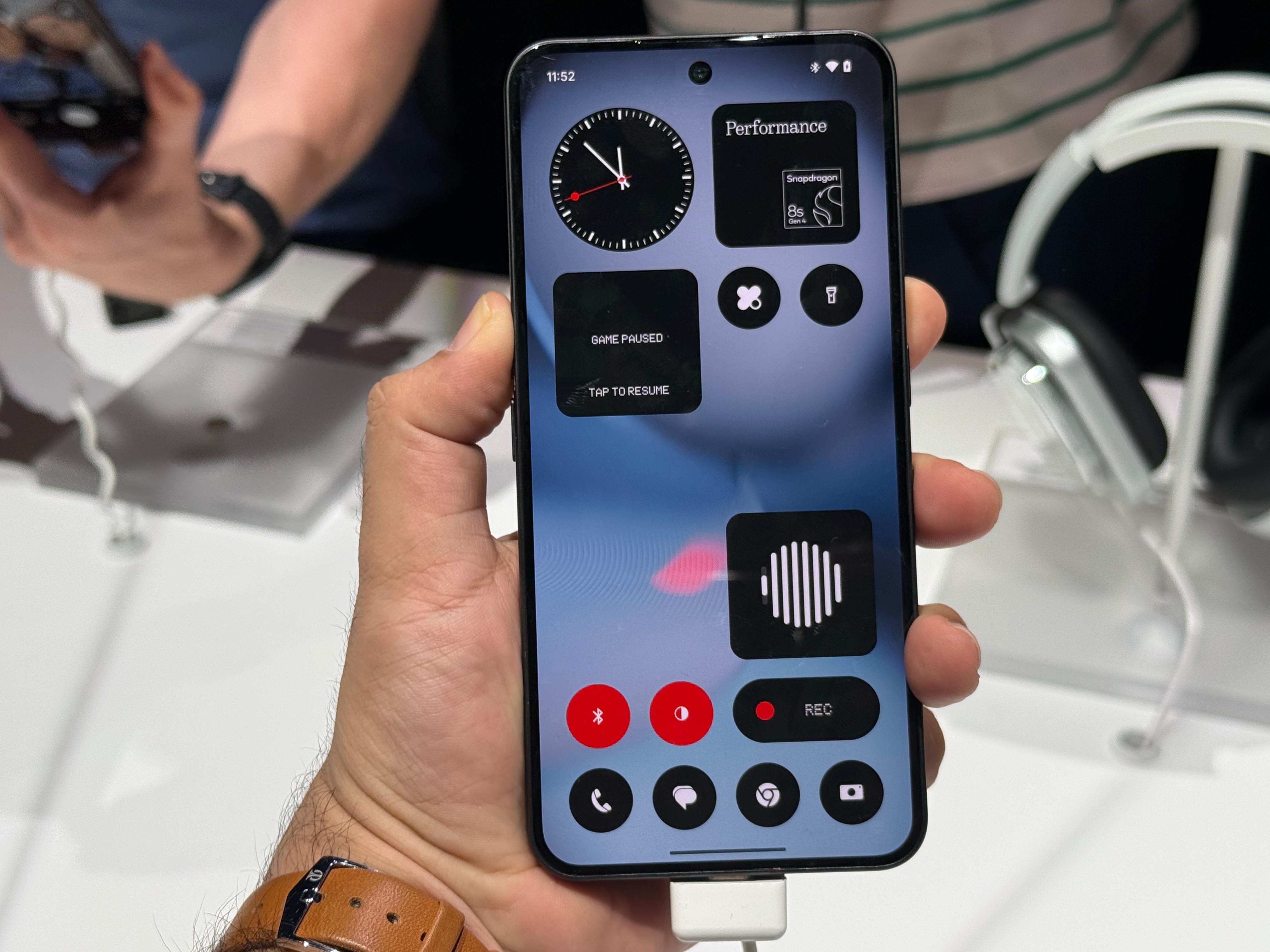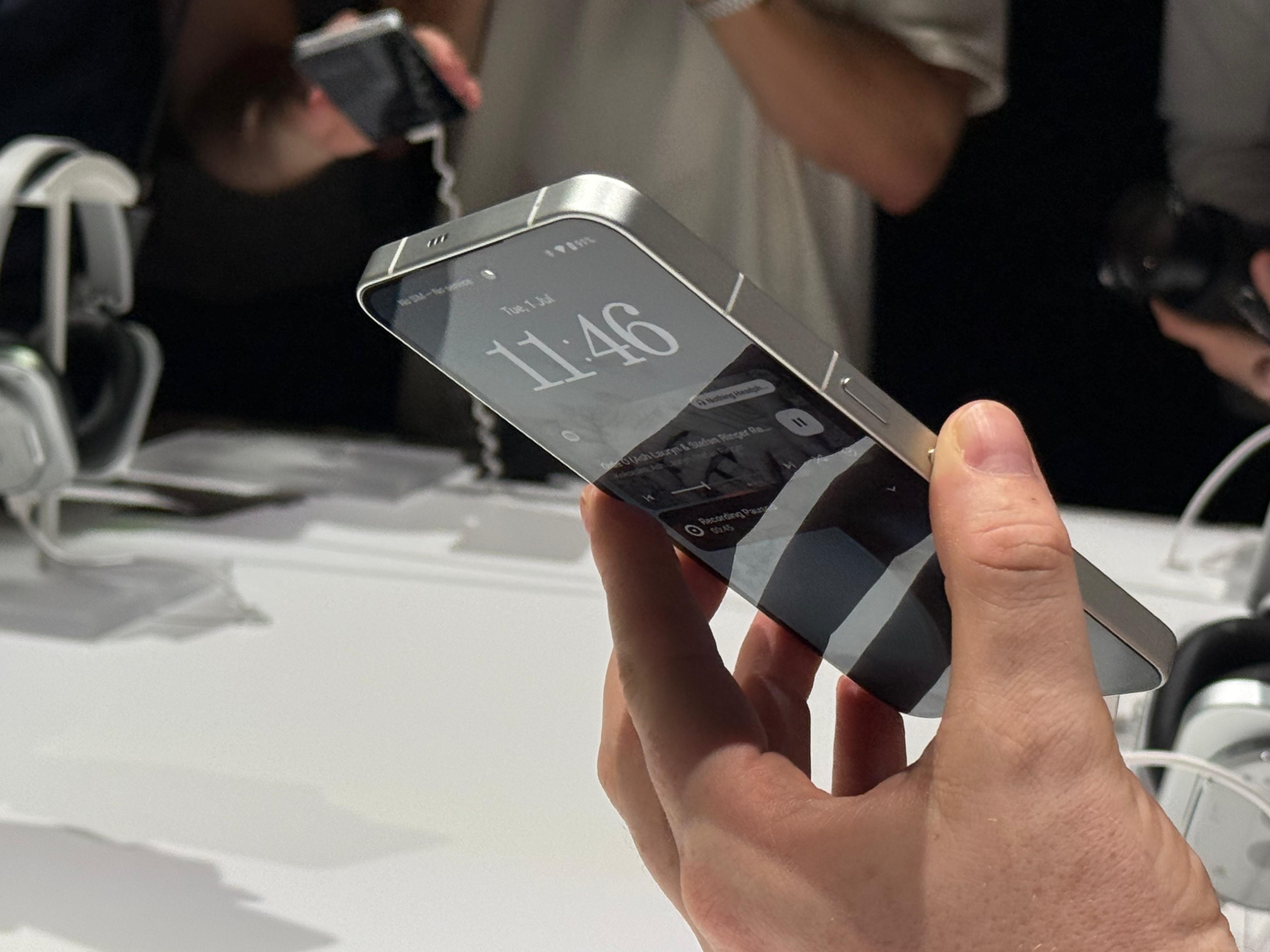Even London’s heat wave couldn’t dampen my excitement to try the Nothing Phone (3). Around ten to twelve tech journalists and YouTubers were lined up behind me—just enough to secure a spot to try out the new device. The massive event gathered hundreds of media from around the world, making it the biggest show Nothing has ever assembled. That scale tells you just how aggressively Nothing is aiming to make the Phone (3) stick in consumers’ minds.
The £800 (Rs 79,999 onwards) Phone (3) is Nothing’s most expensive smartphone to date. That’s a steep price—and one can’t deny it—especially at a time when everything around us has gotten more expensive. The original Phone (1) had a toy-like design that stood out from competitors. But the Phone (3) is a more powerful version—slightly more ambitious in scale, honestly—but it’s also a risky gamble for a brand that’s not yet in the same league as Apple or Samsung. Still, the company is known for taking bold risks, and the Phone (3) comes with several quirky additions that make it a clear step up from Nothing’s previous devices. Yet at the same time, it also gives off a sense of “more of the same”—though it can still surprise you.
I briefly spent some time with the Nothing phone (3) in London, and here’s my early impressions.
Story continues below this ad
 The Phone 3 has a polarizing design. (Image credit: Anuj Bhatia/Indian Express)
The Phone 3 has a polarizing design. (Image credit: Anuj Bhatia/Indian Express)
Looks and feels like a flagship
I am pretty sure the Phone (3) and its design will generate a polarizing reaction. One side will likely say the device has a simply refined design that feels familiar. The other side might notice more drastic design changes that aren’t immediately obvious to everyone.
I don’t know which side you are on, but there’s clearly an effort to build on what the Phone (1) introduced while continuing to evolve the design language. The see-through aesthetic is still present, but I feel the translucent effect has matured—and the Phone (3) is its best expression yet.
There was an instant sense of familiarity when I held the Phone (3) in my hands. It feels sturdier and more substantial—likely because Nothing is aiming for a more high-end look. It’s a large phone, no doubt, but I felt the Phone (3) has a slightly slimmer profile than the Phone (2). The screen size may be the same as its predecessor—6.67 inches—but the display looks much brighter and more vibrant.
However, what strikes me most is the placement of the three cameras on the rear of the phone. It’s absolutely wild—a completely different design, and one of the most unconventional camera layouts I have ever seen. I am not sure what the rationale behind the placement is—they have a separated layout, not arranged in a triangle like on the iPhone 16 Pro, nor in a camera bar like on the Pixel phones.
Story continues below this ad
 The Phone 3 has a dot matrix-like lighting system.(Image credit: Anuj Bhatia/Indian Express)
The Phone 3 has a dot matrix-like lighting system.(Image credit: Anuj Bhatia/Indian Express)
The Glyph interface isn’t dead yet but continues to evolve
When Nothing introduced the Glyph lights on the Phone (1), many—including myself—initially saw them as gimmicky. Still, the distinctive back panel gave the Phone (1) a unique identity. When the Glyph flashes to signal a notification or an incoming call, it gives off an old-school vibe—but also feels refreshingly different.
But on the Phone (3), the original Glyph interface is no longer present. Instead, Nothing has introduced a new version called the Glyph Matrix. This new circular secondary display is located in the top-right corner of the rear panel, replacing the Glyph interface lights from previous models. While Nothing promotes it as a more functional upgrade, it’s a drastic design departure from the company’s earlier devices.
The idea behind the Glyph Matrix is more or less the same as what the original Glyph lights stood for: providing a glanceable view of notifications, timers, contacts, and more. However, Nothing says the Glyph Matrix takes it a step further—it not only signals alerts but also displays content. You can see a stopwatch, a visual selfie counter, and notifications that let you know who’s calling or texting without having to lift your phone.
I tried out how the Glyph Matrix works, and it’s actually fun—reminiscent of how Asus used a dot matrix display on the lids of some of its laptops. But here, the implementation is different and executed in a more refined way. All you have to do is press the Glyph button on the back of the device to interact with the Glyph Matrix.
Nothing is calling these micro-interactions “Glyph Toys,” and there are several of them—like Glyph Mirror, which uses the rear display to frame selfies, as well as a clock, battery indicator, and even a game called “Spill the Bottle.” The company is also opening up the Glyph SDK to the Nothing developer community so that its community can also start building their own tools and games for the Glyph Matrix.
 The interface is simple, clean, and its monochrome UI adds a distinctive experience. (Image credit: Anuj Bhatia/Indian Express)
The interface is simple, clean, and its monochrome UI adds a distinctive experience. (Image credit: Anuj Bhatia/Indian Express)
Improved processor, subtle AI features, and better cameras
Nothing is also touting improved hardware on the Phone (3), packing in the latest Snapdragon 8s Gen 4 processor, coupled with either 256GB or 512GB of storage and 12GB of RAM or 16GB of RAM. Although the Snapdragon 8s Gen 4 isn’t a flagship-grade processor, it still delivers a noticeably better experience than before. Fire up the pre-loaded apps on the demo unit, and the added snappiness is immediately apparent.
AI is also a big part of the Phone (3), though—unlike with other brands—the AI experience is subtly woven into Nothing OS, which remains my favorite interface built on top of Android. Essential Space, Nothing’s version of an AI feature suite, feels simple and not forced. It uses AI to pull out relevant bits of information and helps organize what would otherwise be left floating around your phone. The functionality is pretty basic for now, but Nothing continues to improve it. For example, the company is adding a mode that automatically starts recording a voice memo when you flip the phone over.
Story continues below this ad
The Phone (3) ships with three 50MP cameras on the back, consisting of a main camera, a periscope lens, and an ultra-wide camera. On paper, the camera specs look great, but I haven’t tried the camera yet—so you’ll need to wait for my detailed review of the Phone (3). The device also features a 5,150 mAh battery with 65W wired charging and 15W wireless charging support.
 The Phone 3 is still a large phone. (Image credit: Anuj Bhatia/Indian Express)
The Phone 3 is still a large phone. (Image credit: Anuj Bhatia/Indian Express)
Early impressions
The Phone (3) may not be taking big swings—but it doesn’t have to. Nothing has carved out a niche in the smartphone market with its unique design language—not just in the hardware, but across the software as well. With the Phone (3), the company seems to be blending its differentiated design with scale, and that may be the true test for the London-based brand. No company can succeed purely by selling devices that are unexpectedly weird or wacky—and Nothing knows that well.























